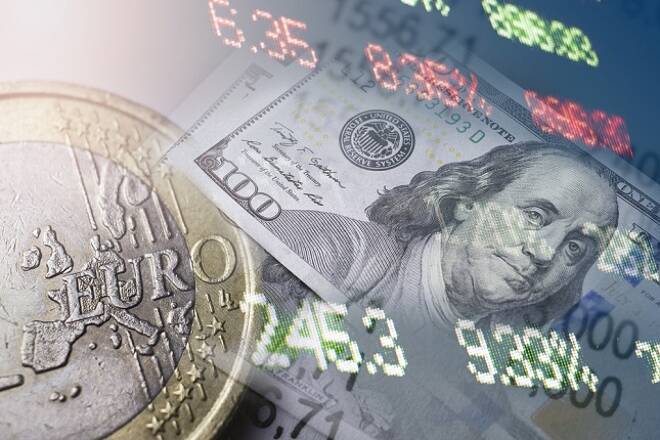Advertisement
Advertisement
EUR/USD Daily Technical Analysis for January 1, 2017
By:
The EUR/USD moved higher as the dollar came under pressure against most major currencies. With growth in Germany picking up, yields in the Eurozone will
The EUR/USD moved higher as the dollar came under pressure against most major currencies. With growth in Germany picking up, yields in the Eurozone will likely accelerate higher catching up to their U.S. counterpart driving the EUR/USD higher.
Technicals
The EUR/USD pushed through the November highs at 1.1961, which is now seen as short term support and is poised to target the September highs at 1.2059. Additional support on the currency pair is seen near the 10-day moving average at 1.1876. Momentum remains positive as the MACD (moving average convergence divergence) index recently generated a crossover buy signal. The MACD histogram is printing in the black with an upward sloping trajectory which points to a higher exchange rate.
German Inflation Decelerated
German HICP inflation fell back to 1.6% year over year in December, from 1.8% year over year in the previous month. The deceleration was expected after base effects from energy prices lifted headline rates in November and the annual rate was in line with our median, but a tad above consensus. Together with the sharp drop in the Spanish HICP rate, the preliminary numbers confirm expectations for a decline in the overall Eurozone HICP rate at the end of the year. But while the numbers back Draghi’s so far dovish line on inflation, core is likely to have remained steady or even pick up slightly and even central bankers are now admitting that underlying inflation pressures are likely to rise over the next year.
ECB’s Nowotny optimistic about Austrian growth.
The Austrian central bank head said “the mood for the economy has improved continuously this year”, adding that there is “reason for optimism in 2018 and beyond” as world trade developed better than expected. And so far Austria hasn’t yet felt economic effects from Brexit. ECB officials have been increasingly optimistic about economic developments and while so far Draghi has been dovish on inflation, the tone is likely to change in coming months.
German Exporters Remain Optimistic
German exporters remain optimistic for 2018. The BGA exporters federation sees exports up 5% next year, although with imports seen picking up 7%, the trade surplus is likely to take a hit. The BGA said it remains optimistic for 2018 after a “sensational year”, but added that the wave of nationalism around the world is a serious threat to Germany’s export drive.
Eurozone M3 Was Steady
Eurozone M3 money supply growth remained steady at 4.9% year over year in November, as expected. The counterparts showed household lending growth slowing down slightly, but picking up when adjusted for sales and securitization. The growth rate of loans to non-financial corporations accelerated slightly to 1.8% year over year from 1.7% year over year. Financing conditions remain good, also thanks to the ECB.
Spanish Inflation Fell back
Spanish HICP inflation fell back to 1.3% year over year in December, from 1.8% year over year in the previous month. A stronger than expected deceleration in the headline rate that confirms that the uptick in November was largely due to energy prices and base effects and hints at weaker than expected headline rates for the rest of the Eurozone that will back Draghi’s dovish take on the inflation outlook. However, while sharp variations in headline rates over recent months are largely due to the impact of energy prices, even the ECB is admitting now that underlying inflation is likely to start moving higher as the economic recovery strengthens and the labor market continues to tighten.
German Economic Recovery Matured
The German economic recovery matured in 2017, with broadly balanced growth and an increasingly tight labor market. Also thanks to Draghi, this was is not the typically export led cycle and consumption and domestic demand continued to drive the economic expansion that is likely to have peaked in 2017 as further growth is running into capacity constraints. The manufacturing sector has so far not felt the impact of a stronger EUR, on the contrary, manufacturing demand remains very strong. The question now is how sustainable the recovery is as special factors are bound to end, the ECB is starting to eye the end of asset purchases, while Germany is still without a fully functional government and structural reforms are being pushed even further back.
About the Author
David Beckerauthor
David Becker focuses his attention on various consulting and portfolio management activities at Fortuity LLC, where he currently provides oversight for a multimillion-dollar portfolio consisting of commodities, debt, equities, real estate, and more.
Did you find this article useful?
Latest news and analysis
Advertisement
